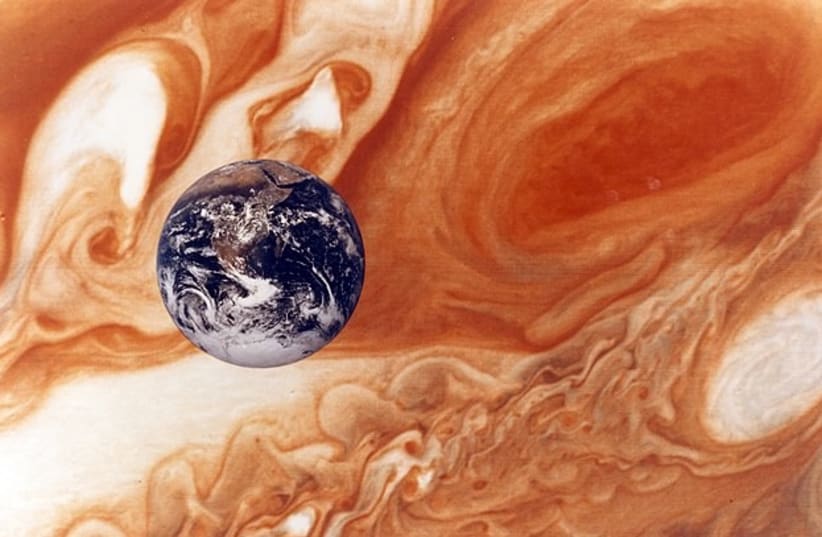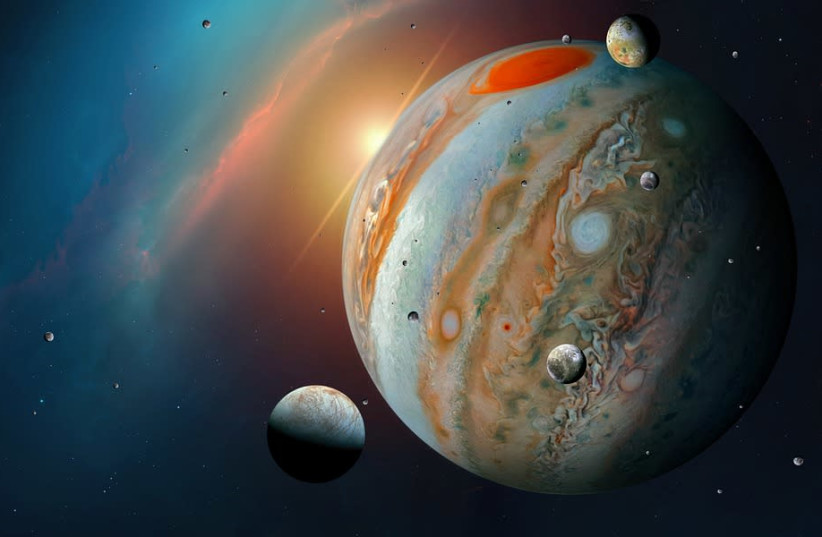An alternative solar system built by UC Riverside researchers suggests that Earth's orbit would change if Jupiter's orbit were to become more eccentric, in turn making Earth more hospitable.
There have long been assumptions about Earth’s habitable range, as explained in a newly published peer-reviewed study entitled "System Architecture and Planetary Obliquity: Implications for Long-term Habitability," authored by UCR Earth and planetary scientist Pam Vervoort.
“Many are convinced that Earth is the epitome of a habitable planet and that any change in Jupiter’s orbit, being the massive planet it is, could only be bad for Earth,” Vervoort said.
But, according to the study published in the Astronomical Journal, it is possible that a change in Jupiter’s orbit could actually be good for Earth, possibly making it more hospitable than it is today.
How does an orbit’s eccentricity relate to Earth being able to host more life?
Although there are a number of planets with perfectly circular orbits around their stars, most planets have eccentric, or oval-shaped, orbits. This means that the distance between the star and the planet changes, which affects its climate because the planet obtains more heat when it nears its star.
Therefore, seeing that Earth is habitable for life forms in areas with a temperature between zero and 100 degrees Celsius, sub-freezing surfaces would need to be warmer in order to host life forms. In order for said sub-freezing surfaces to heat up, they would need to sometimes get closer to the sun. The way to produce such a result, placing their temperatures in the habitable range, is for the Earth’s orbit to become more eccentric.
So, where does Jupiter come into this?
“It’s important to understand the impact that Jupiter has had on Earth’s climate through time, how its effect on our orbit has changed us in the past, and how it might change us once again in the future."
UCR astrophysicist, Stephen Kane
“If Jupiter’s position remained the same, but the shape of its orbit changed, it could actually increase this planet’s habitability,” explained Vervoort.
If Jupiter's orbit became more eccentric, it would push Earth's orbit to become more eccentric, allowing more of Earth’s colder surfaces to become warm. In other words, this change in Earth's orbit, caused by a change in Jupiter’s orbit, would allow for more of Earth's surface the ability to host life.
After analyzing these findings, the researchers realized they could be used in searching for exoplanets, or habitable planets around other stars.
What factors should be considered when searching for exoplanets?
Study co-author and UCR astrophysicist, Stephen Kane, explains the first thing people look for in these searches saying, “The first thing people look for in an exoplanet search is the habitable zone, the distance between a star and a planet to see if there’s enough energy for liquid water on the planet’s surface.”
However, while liquid water is an essential ingredient for life, it is not the only factor.
“Having water on its surface is a very simple first metric, and it doesn’t account for the shape of a planet’s orbit, or seasonal variations a planet might experience,” Kane explains.
Similar to Earth, other planets also have seasons. These seasons are created based on the number of sun rays that different parts of a planet receives, which is dependent on its orbit. This affects how habitable a planet is because the temperatures throughout the planet could vary drastically, being extremely cold in one part and unbearably hot in another.
That being said, there is another factor that needs to be accounted for when discussing the habitability of a planet.
The degree to which a part of a planet is tilted away from or towards a star affects that part of the planet's energy, causing a change in its temperature. For example, the part of the planet tilted towards the star will be hotter because it will get more energy.
Thus, the researchers recognize that while Jupiter could make the earth more habitable, it could also do the opposite. If Jupiter were positioned closer to the sun, it would cause Earth to tilt extraordinarily, causing large sections of Earth to be sub-freezing. However, measuring tilt is a difficult task. In order to account for the factor of tilting, the researchers need to develop methods to estimate the amount of tilt a planet will experience.
“It’s important to understand the impact that Jupiter has had on Earth’s climate through time, how its effect on our orbit has changed us in the past, and how it might change us once again in the future,” Kane said.

